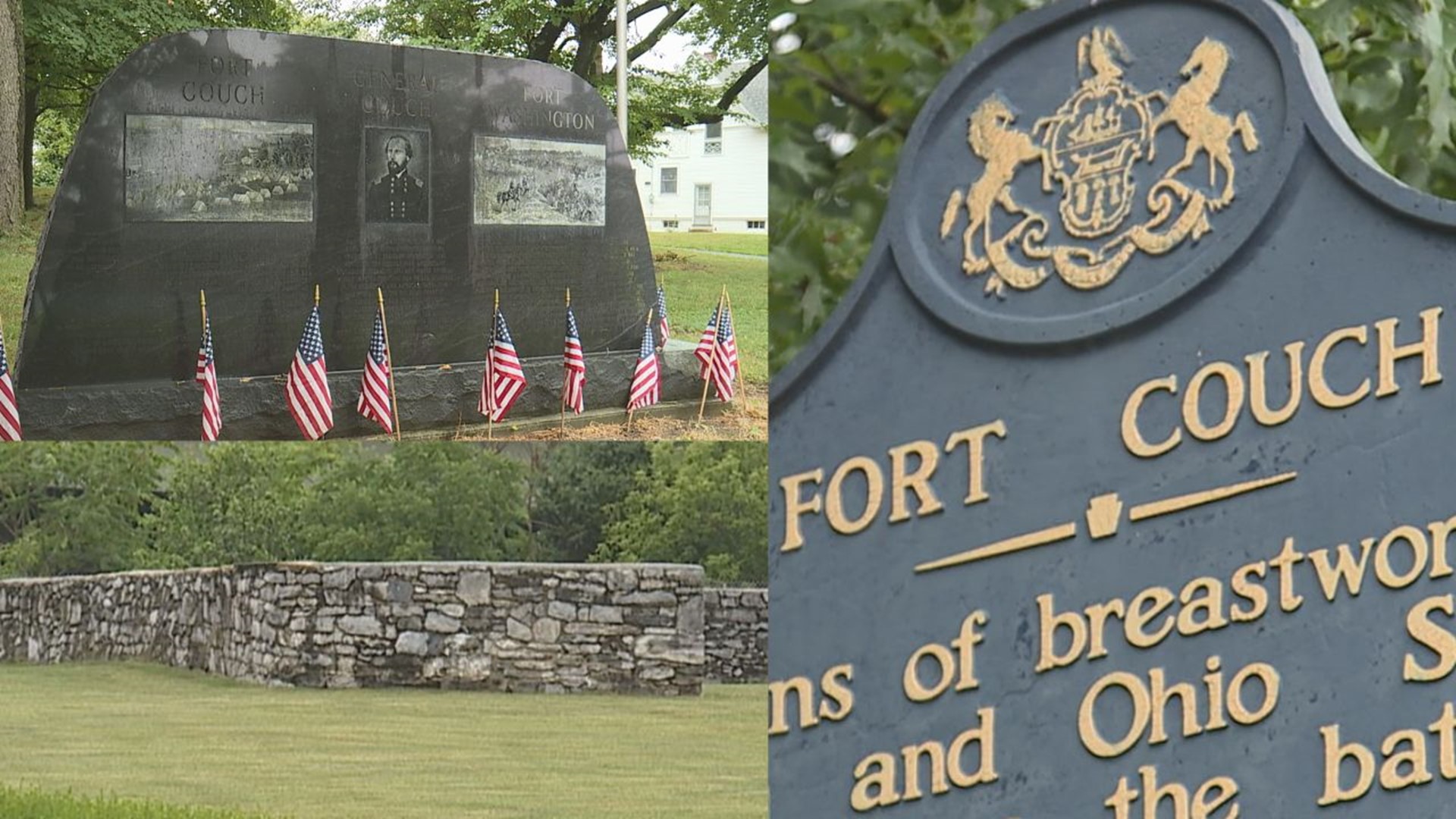MECHANICSBURG, Pa. — "Another unit of the 12th New York National Guard is guarding the Statue of Liberty Bridge Northern Central in Marysville, and the one member in that unit is Boston Corbett, who kills John Wilkes Booth," said Jim Schmick as he walked around his Mechanicsburg store, Civil War and More.
It doesn't take long to see why if you ask the state museum or any local historical societies on the West Shore about their region in the days leading up to the Battle of Gettysburg, they point you in the direction of Schmick.
"So Harrisburg, a town of 14,000, ends up having over 500,000 troops come through it," recalled Schmick, talking about Harrisburg's past as a main training center and transportation hub during the Civil War.
Schmick knows the Confederates' hopes to take Harrisburg didn't end with the burning of the Wrightsville Bridge.
Almost a week before any shots were fired in Gettysburg, Rebels covered the Cumberland Valley.
"Every time the militia—remember, these guys never fought in their life—every time they saw the Rebs they hightailed it back to the Lemoyne bottleneck," said Schmick. "So they were confident that Harrisburg wouldn't be a problem to take."
Any opportunity to take Harrisburg could have also solved another problem that plagued the Confederacy for the length of the war: the Union blockade.
"Stonewall's map maker Jed Hotchkiss was a teacher in the coal mines in Lykens, which were the best and the biggest at the time of the Civil War," recalled Schmick. "Twice, they come up here to torch the coal mines that are supplying the United States Navy with their fuel to blockade southern ports from getting stuff in from Europe."
(You can see an extended interview with Jim Schmick about the Civil War in Harrisburg and Cumberland County in the video above.)
While inexperienced, the Union was able to build up some defenses around the capital city with the arrival of Darius Couch, who took command of the new Department of the Susquehanna.
"Fort Washington was the Lemoyne bottleneck. Now, Lemoyne was only 12 homes back then, down to the red light near Dunkin' Donuts. That's all Lemoyne was, called 'Bridgeport.' So that hill from Duke's and Dockside Willies is just a forest, so they had to cut all that down. And they started building Fort Washington when they got there," said Schmick from his years of research. "He (Couch) says there's better ground west of here and that's why there's Fort Couch. Negly Park was Camp Couch. If you don't dig dirt you're a camp. If you dig dirt, you're a fort."
Mechanicsburg joined York as cities that surrendered to the Confederates. Mechanicsburg was the northernmost city to do that in the Civil War.
The two sides would skirmish at Oyster Point—or as it's known today, Camp Hill—but on June 30 they met again, as Confederate General Richard Ewell received word that he must bring his troops to Gettysburg.
"He forgets to tell the guys waiting for him to get out," added Schmick. "So you have 800 behind the Wegmans and Target by the creek looting farms, waiting for Ewell, who is not coming. You have 300 at Denny's, which was Gleim's Woods, and 15 in a barn behind Carpet Mart. The base of it is still there."
Depending on who you talk to, another Battle or Skirmish of Sporting Hill was about to begin. New York Militia General John Ewen froze when shots were fired at his men from what was then called the Eberly Barn. Rufus King Jr. not only saved this group from being surrounded by Confederates, but when the Union battery showed up, he corrected the green soldiers' procedure to load the guns and helped them hit the barn square, killing almost a dozen Confederates inside.
"So the Union National Guard out of New York lined up from Gilligan's down to Dunkin' Donuts there, and they had experienced officers help them with their cannons," said Schmick. "They did a good job getting the Confederates out of here and then they found out they were supposed to be in Gettysburg. They didn't realize it at the time because they weren't told."
You can find more information on the Battle of Sporting Hill and Cumberland County during the Civil War at the following resources:
- Visiting Jim Schmick's store Civil War and More
- Visiting the Camp Curtin Historical Society


